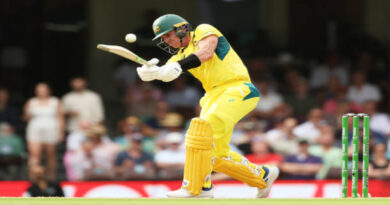Cummins and ODIs, not quite a love story just yet
The systems associated with organizing a spell in ODIs present Pat Cummins with a problem he is quick to overcome, 12 years in the wake of making his presentation in the configuration. That might appear to be an unusual focal point from a commitment with an Australian commander under tension after his group’s loss to India and their battles against turn, yet it’s a little illustration of a greater picture that we will discuss all competition: the fate of this organization.
We don’t for a moment even need to go through the proposition to scrap two-sided ODIs and keep the organization to World Cups just, because in Cummins, we have a prepared model. He had just played 19 matches between the last World Cup and this one; and remembering Australia’s loss to India for their Reality Cup opener this time, he has played just three this year, and only 78 across twelve years. The result is that it has taken him longer than it might somehow or another need to feel certain about his strategic way of dealing with ODIs.
“Right off the bat in my profession, I found it a hard harmony between Test cricket and T20, and I was getting excessively crazy,” Cummins said at the Ekana Arena in Lucknow, the day preceding Australia arranged to play South Africa. “With one-day cricket, your jobs can be altogether different – from being an initial bowler with a ball that swings to coming on first change and perhaps bowling cross-seamers where you are attempting to shield and help your wickets through pressure. It’s an alternate sort of challenge to different configurations.”
It is likewise what Cummins called “the most burdening” of the three arrangements, because as we probably are aware from the ICC motto – it, truth be told, genuinely requires one day. One. Entirety. Day. Albeit the span of a Test and the force of a T20 can’t be matched in an ODI, how much time is spent on the feet and the kilometers run in the legs will be more than both different forms of the game.
“The greatest test is that you have ten overs [to bowl]. It’s a seriously actual configuration,” Cummins said of ODIs. “I think that it is the most genuinely burdening on the off chance that you are doing a few games in seven days. We are doing 15k (kilometers) in a 50-over match.”
And afterward, there’s the compromise between consistency and imagination that should become possibly the most important factor in one-day cricket, where some degree of persistence is expected close by a bit of hard and fast assault.
“In T20, assuming you bowl one great over that can game dominate. Be that as it may, in one-day cricket, it’s not typically the situation,” Cummins said. “What’s more, it’s uncommon that conditions are in the bowlers’ approval, which is fine. It’s simply a test you must attempt to manage. It’s extreme yet I in all actuality do appreciate it.”

Cummins expects no less than something will get simpler on Thursday when he figures there will be speed and bob on offer on a surface that remains something of a secret. Just four ODIs have been played at the Ekana Arena up to this point, with the most noteworthy score batting initially being 249 in an entire 50-over innings. Three of those ODIs were played in 2019, with one held last October, yet the pitches have since been uncovered and relaid.
Cummins likewise feels his structure is “in as great a spot as it’s at any point been”, and backs himself to be “nearly ready for anything”, including perhaps “passing bowling”. Against a South African line-up that is in great structure, he likewise expects that he might need to attempt “to make a wicket from nothing”, even as unconventionality is likewise something he has been dealing with.
All that doesn’t detract from his naiveté as ODI skipper – since being named ODI chief in October last year, he has played just five out of Australia’s 15 ODIs – and the issues Australia needs to settle in the center overs. That is where they lost the game against India after they slipped from 110 for 2 in the 28th over to 199 full scales.
It’s something the batting bunch, under the direction of Andy Blossom, who has likewise been Lucknow Super Monsters’ mentor – the IPL group whose home ground is the Ekana Arena – have been examining, and similar to Cummins’ own decisions about bowling, it’s a harmony between designs they’re chasing.
“It’s an obvious fact that the [middle-overs] time of the game is by all accounts the main in one-day cricket,” Cummins said. “How would we make associations? Assuming they’re bowling great, how would we move the tension back onto their bowlers, and attempt and pressure them to reveal more than was prudent to roll out certain improvements? It’s a genuinely sensitive equilibrium in one-day cricket of not facing colossal challenges, but rather disliking Test cricket where you can endure it. You need to keep the run rate ticking over.”
The center overs are additionally remembered to be the slope on which ODI cricket might kick the bucket, except if the account that unfurls in that entry is enamoring regardless of whether nuanced. As Cummins indicated, those overs are the Goldilocks of the game where players are expected to not do a lot of a certain something or excessively tad of another, and for Australia, it’s tied in with figuring out how much is perfect.



